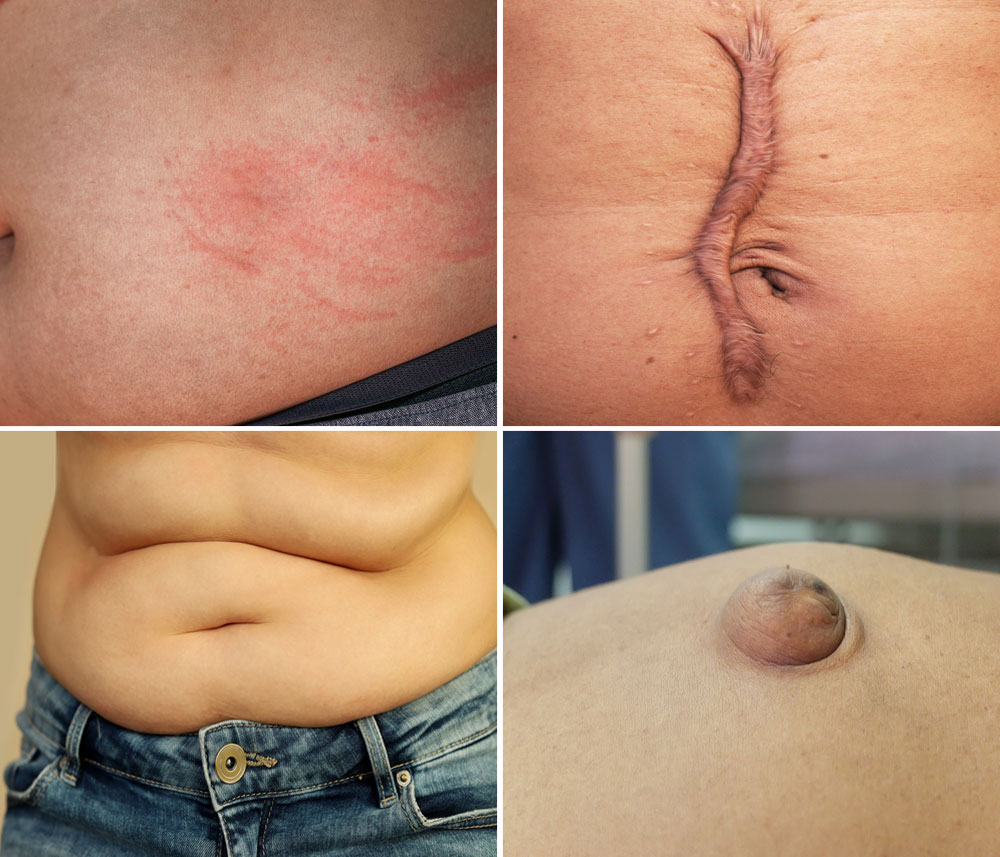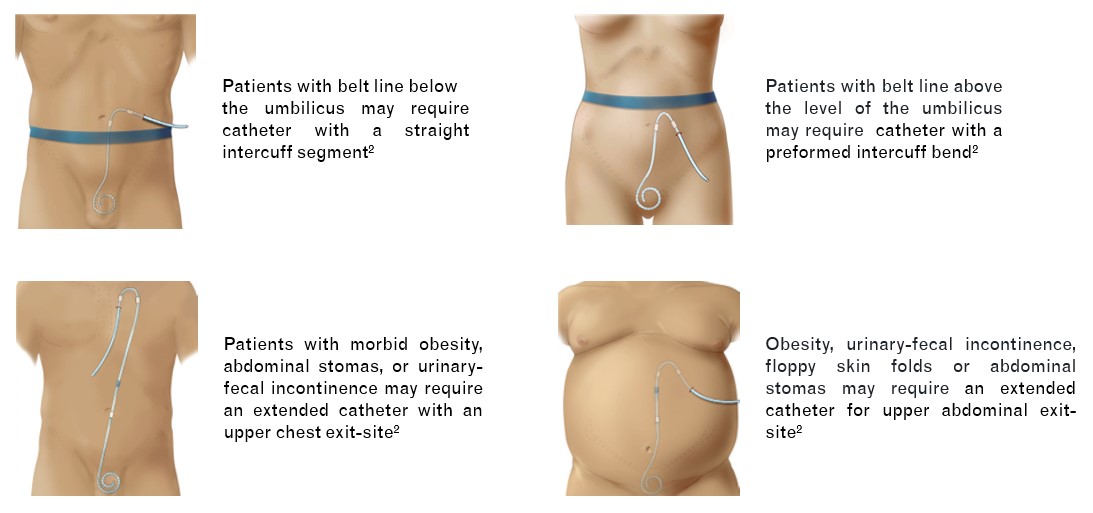Catheter Insertion and Care
Preoperative Management
Preoperative Management
Review the recommended actions and processes for your facility and patient prior to the catheter insertion procedure.
Perioperative and Intraoperative Management
Explore more on the percutaneous PD catheter insertion technique.
Postoperative Management
Recap on the post-procedure activities associated with preparing your patient for discharge after PD catheter insertion.
Catheter Insertion and Care - Preoperative Management

Ideally, the optimal timing for peritoneal catheter insertion should take place at least two weeks prior to the use of the catheter to ensure good tissue ingrowth, fixation of the deep and superficial cuffs, and healing of the exit site.1
Determine factors that may impair initial wound healing and exit-site care management

Factors that impair the wound healing and exit-site care management
- History of colostomy, gastrostomy or urostomy
- Clinical status (chronic cough, steroids use, edema)
- Nutritional status
- Obesity- pannus location2
- Use of adult diapers
Adapted from: Crabtree JH, et al. 2019

Evaluate for
- Rash and evidence of infection on the abdominal wall.
- Pre-existing abdominal scars.
- Chronic intertrigo under breasts and abdominal skin folds.
- Abdominal wall hernias, if repair is required.3
- *Staphylococcus aureus nasal carriage should be treated with intranasal mupirocin as per hospital protocol.4
*As per hospital protocol
Key Activities
-
Catheter selection and the placement technique should be determined through shared decision making between the patient and a clinician in charge.7
-
Set up an appropriate communication plan with the operator for catheter placement and patient follow-up.
-
Confirm catheter placement date.
-
Determine an appropriate exit-site location.
-
Inspect the patient to determine belt-line area and other anatomical features.
-
Avoid scars, folded areas, pressure points or poorly visualized area during exit-site care.2
-
Mark exit-site using stencils or actual catheter.
Choice of Catheter Types
Standard Tenckhoff-style catheters with or without a preformed intercuff cuff bend or a Straight- or coiled-tip configurations are most commonly used.2,3

Illustrations adapted from Crabtree JH, et al. 20175
Preoperative Instructions for Patients and Caregivers

- Bowel Preparation.6
- Fasting of at least 8 hours prior to
- catheter insertion or midnight fasting as per hospital protocol.
- Bathing with disinfectant soap on the day of surgery.6
- Empty bladder.6
Adapted from: Crabtree JH, et al. 2019